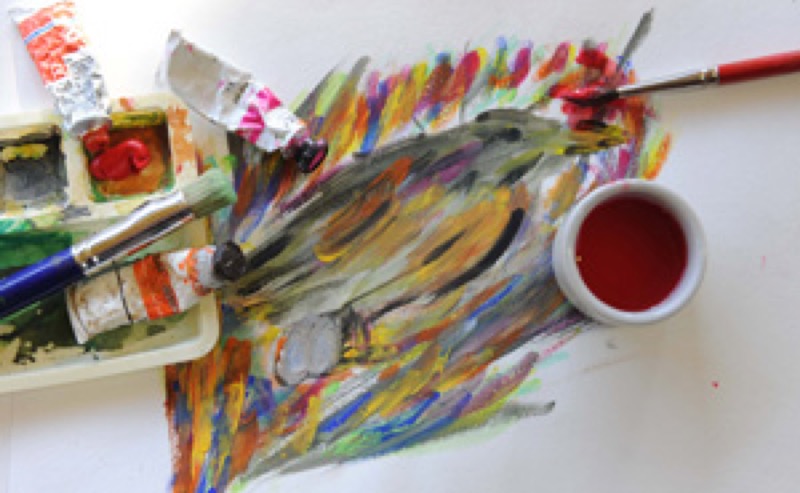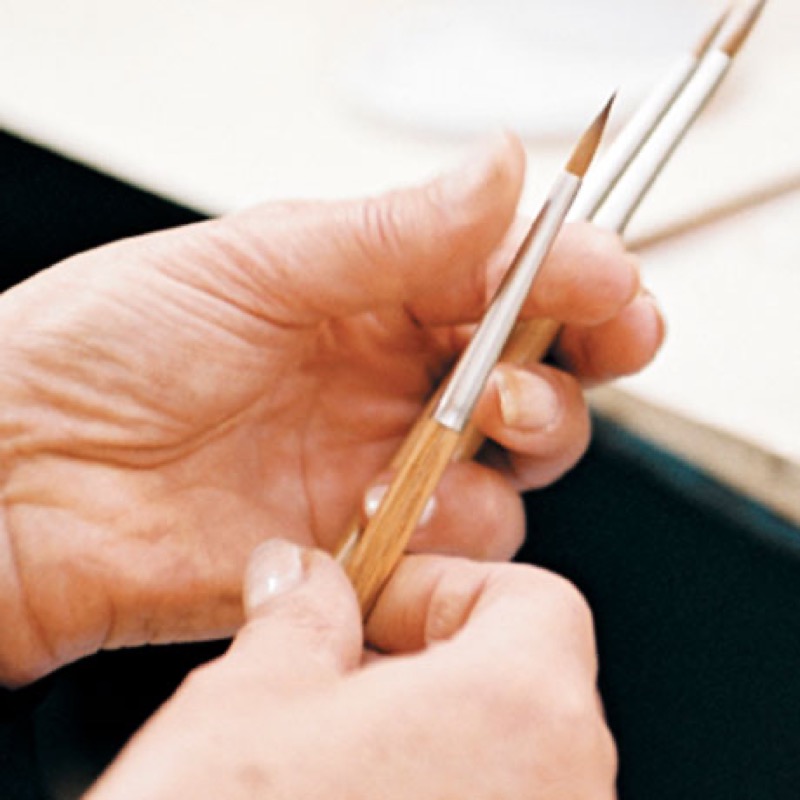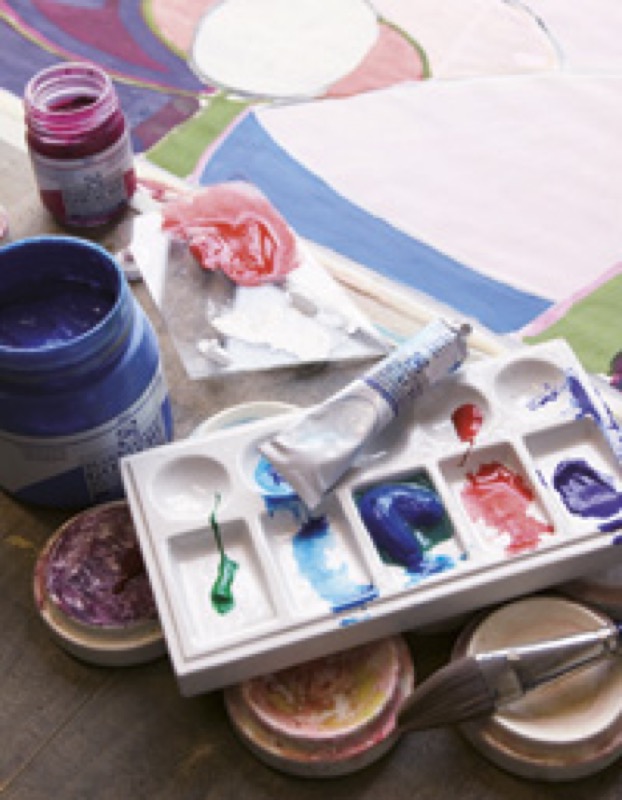Gouache paints can be used at will on a wide range of supports… Gouache is easy to manage and undemanding, and only requires… a little fresh water to display its full richness!

1. Paper
1.1. Weight
Any paper made for watercolors is appropriate for gouache. You can also use at least 200 g/m², low grammage papers.
To prevent any crinkling, paper under 300g/m² has to be wet and stretched on a board or frame.
1.2. Pads or loose sheets?
You need loose sheets for large formats.
Pads with sheets held together with adhesive: this is the perfect support. All you need to do is detach all your finished—and dry—work!
Spiral pads are very practical for tests.
1.3. Grain
Select a fine grain paper that is smooth enough to allow precise work and hold paint well. Use satin finishes for meticulous work and rough grains for effects using its coarse texture.
Memo: Dare to use color!
Unlike watercolors, there is such a thing as white in gouache! Favoring colored paper has two advantages:
The finished work has its own natural frame.
Because gouache is opaque, light colors stand out well on tinted paper.
2. Other supports
Gouache adapts to any non oily surface: cardboard, wood, plywood, etc. When used on hand-crafted papers, it allows endless variation.

3. Paintbrushes
Any paintbrush intended for watercolors is suitable. While the standard remains sable bristles, you can also use good quality squirrel or synthetic paintbrushes.
Just a few essentials will get you started: three round paintbrushes (fine, medium and thick). Add a flat brush about 1 to 1.5 cm wide.
Memo: Paint any way you want!
Tools put to new uses can produce spectacular results:
Toothbrush: for spattering droplets.
Comb: for ripple effects.
Sponge or rags: for highly textured backgrounds.
Painting or utility knife: for scratching.

4. Colors
While you can theoretically recreate the entire spectrum by mixing the three primary colors, you'd be better off starting with a dozen of tubes, including one black and one white. Ready-to-use colors will always be more intense than anything you create.
Gradually learn how to blend, and complete your palette depending on what you find you need.
5. Palette
Get a white plastic or ceramic one to make your colors stand out.
Also consider having separate cups, so you can do a partial clean up while working, and prepare new colors.
A second palette, just for blending, can prove useful.
6. And also…
6.1. Essentials:
A paper pencil for detailed sketching
A graphite pencil for small details that are hard to create with a paintbrush
A sponge, a soft rag
One or two cups for water
6.2. "Extras" for pros:
Although gouache is usually worked on while lying flat, a table top easel with variable tilt can be useful for creating backgrounds.
Ox bile promotes adhesion on non-porous surfaces… and recalcitrant colors.
Gum arabic: it makes gouache more transparent and lowers the risk of thick layers of paint cracking.
Varnish protects your work and allows you to add a matte or glossy finish to your work, as needed.
Art chalk (charcoal, pastels…): use along with gouache.
Recommended product:
XL® Watercolour
See also :
Gouache
Gouache: Basic concepts
